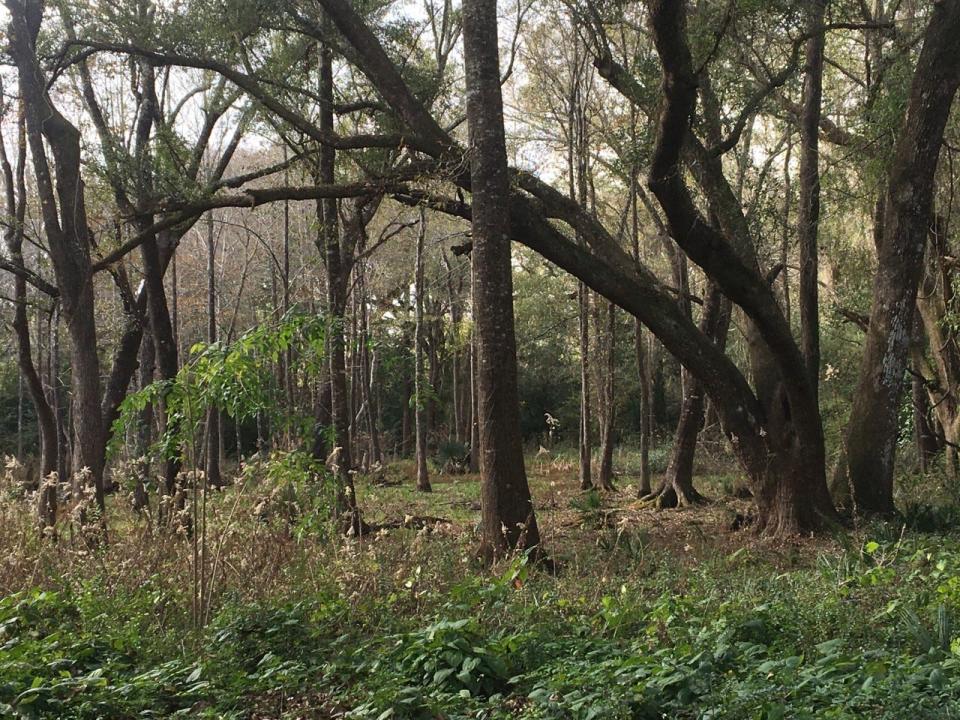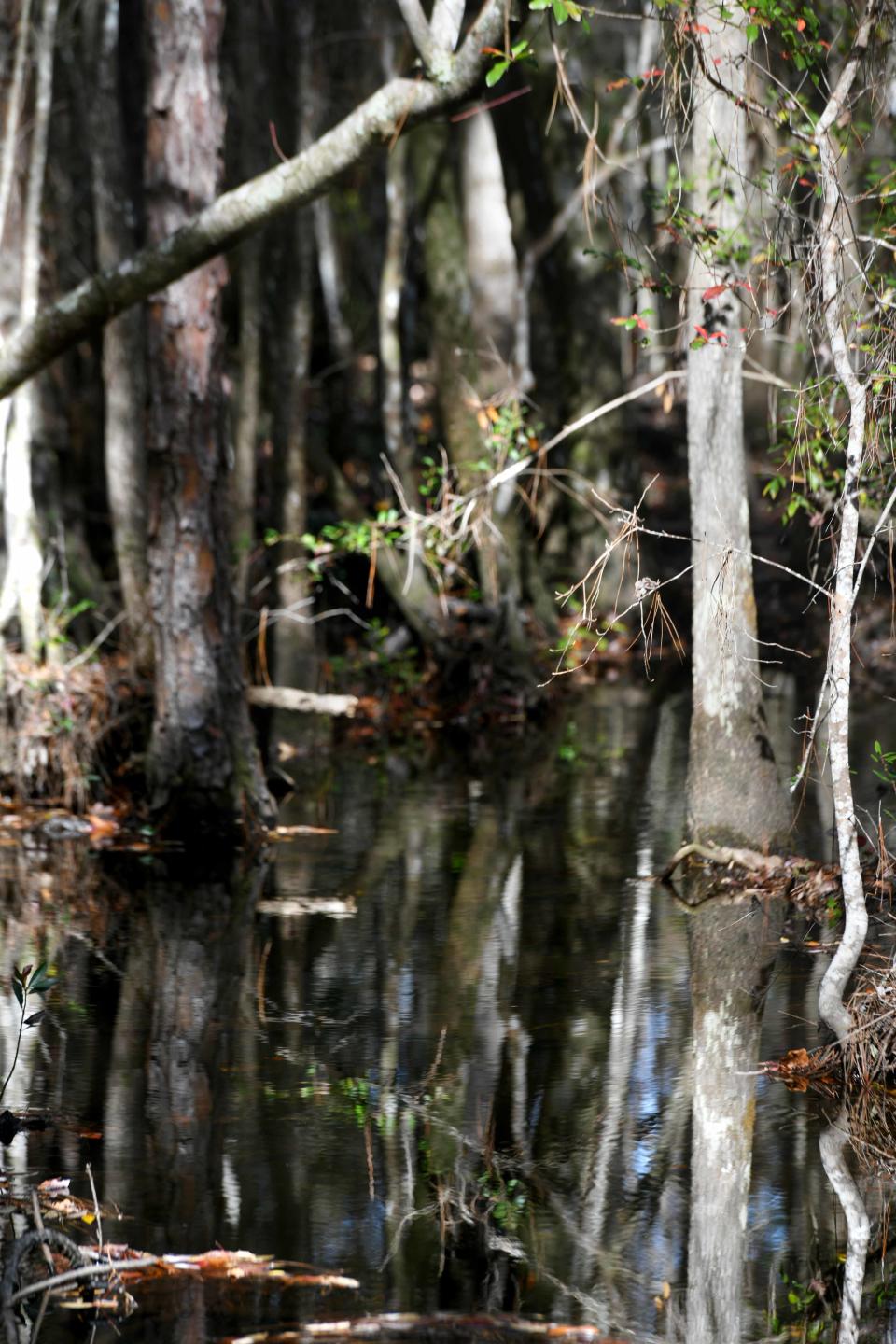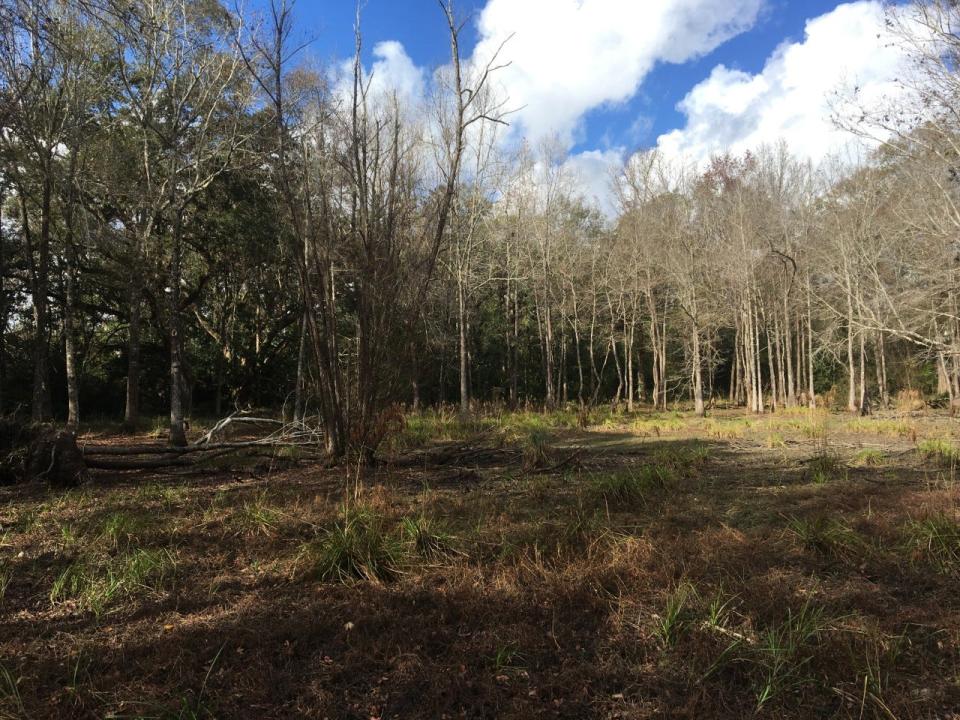Florida has lost 44% of its wetlands since 1845. What is the environmental impact?
While some folks might view them as messy, bug-infested places to avoid, swamps, marshes and other types of wetlands provide numerous benefits to people, flora and fauna.
Wetlands are areas where water covers the soil or is present either at or near the surface of the soil all year or for varying periods of time during the year, including during the growing season, Northwest Florida Water Management District environmental scientist David Clayton said in an email.
“The primary factor that distinguishes wetlands from terrestrial landforms or water bodies is the characteristic vegetation of aquatic plants, adapted to the unique oxygen-free hydric soils,” Clayton said. “Wetlands are considered among the most biologically diverse of all ecosystems, serving as home to a wide range of unique plant and animal species.”

Related: Crestview Commons' owner/developer is fined $12,000 for damaging wetlands
More: Okaloosa County offsets impacts of Crestview bypass on wetlands
He said two general categories of wetlands are recognized: Coastal or tidal wetlands and inland or non-tidal wetlands, which can be either forested or herbaceous.
“Wetlands are a critical part of our natural environment,” Clayton said. “Wetlands protect shorelines from wave action, reduce the impacts of floods, remove pollutants, improve water quality, store floodwaters, maintain surface water flow during dry periods and provide fish and wildlife habitats.”
About 900 terrestrial animal species use wetlands for foraging, breeding or other activities while at least 150 bird species and 200 fish species are wetland dependent, he said.
According to the National Park Service, wetlands provide a home to at least one third of all threatened and endangered species.
The value of wetlands was highlighted in early December, when the Water Management District fined the owner/developer of the future Crestview Commons mixed-use project $12,000 and ordered it to take “corrective actions” after allowing fill dirt to enter more than a half-acre of wetlands buffer and wetlands areas next to the project site and committing other violations.

A few weeks before the district issued that fine and orders, the worth of wetlands had made the news after the Okaloosa County Commission agreed to buy more than $700,000 of “mitigation credits” to offset the loss of about 6 acres of wetlands from the construction of part of the Southwest Crestview bypass.

For regulatory purposes, the U.S. Army Corps of Engineers and the U.S. Environmental Protection Agency (EPA) have used the following definition of wetlands since the 1970s: “Wetlands are areas that are inundated or saturated by surface or ground water at a frequency and duration sufficient to support, and that under normal circumstances do support, a prevalence of vegetation typically adapted for life in saturated soil conditions. Wetlands generally include swamps, marshes, bogs and similar areas.”
Except for wetlands flooded by ocean tides, the amount of water present in wetlands fluctuates as a result of rainfall patterns, snow melt, dry seasons and longer droughts, according to the EPA.
While they can be found in every county and climatic zone in the United States, wetlands currently cover only 5.5% of the land in the 48 contiguous states, according to the EPA. It reports that about 95% of these wetlands are freshwater; the rest are marine or estuarine.

The National Park Service states on its website that in the not too distant past, wetlands were regarded as “wastelands.”
“Most people felt that they were places to be avoided, and it was common practice to drain them, fill them or treat them as dumping grounds,” Park Service officials said on the site. “A study published by the U.S. Fish and Wildlife Service in 1990 revealed a startling fact: more than half of the 221 million acres of wetlands that existed in the lower 48 states in the late 1700s have been destroyed.”
Since Florida became a state in 1845, its total wetland area has decreased by about 44%, according to the Florida Fish and Wildlife Conservation Commission.
The EPA reports that while wetlands extent can be affected by a variety of natural stressors such as erosion, land subsidence, droughts, sea level change and storms, the vast majority of wetland losses and gains during the past few centuries have occurred as a result of human activities.
“For years, people have drained or filled wetlands for agriculture or development, causing habitat loss as well as a decline in many other important wetland functions,” EPA officials said on their website.
Because of their importance, wetlands are protected by the state of Florida and the federal government, Clayton said.
“The U.S. Army Corps of Engineers protects wetlands under Section 404 of the Clean Water Act,” he said. “The Florida Water Resources Protection Act provides the Department of Environmental Protection and the water management districts with the responsibility of regulating the state’s wetlands through the environmental resource permit program."
This article originally appeared on Northwest Florida Daily News: Florida officials working to restore, protect wetlands

